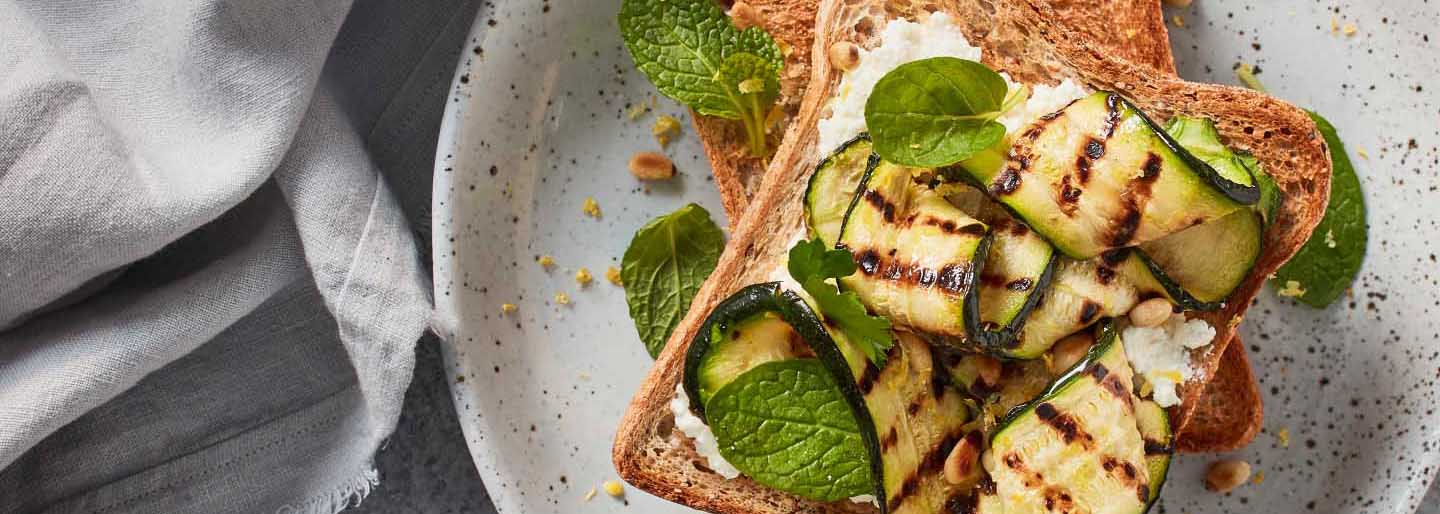There are many myths and misconceptions about the low FODMAP diet. We’ve paired up with Monash FODMAP to debunk the top 5!
1. A low FODMAP diet is a gluten free diet
Is low FODMAP gluten free? Not at all. Unless you have Coeliac disease, gluten is safe to consume and a gluten free diet is unnecessary.
Research shows that it’s often the FODMAPs in food that trigger symptoms in people with so called ‘non-coeliac gluten sensitivity’ – not the gluten [1, 2, 3]!
Some people with Irritable Bowel Syndrome (IBS) may experience fewer symptoms following a gluten free diet – but this is usually because FODMAPs and gluten exist in the same foods.
Ultimately, many people with IBS are able to keep gluten in their diet while still experiencing an improvement in their symptoms simply by following a low FODMAP diet.
Our Wholegrain LowFOD™ Loaf is the perfect example of a product containing gluten that is low in FODMAPs and very popular among those with IBS and sensitive tummies. So if you’re on an IBS diet, you can still enjoy your bread!
2. Wheat containing foods such as bread, cereal and pasta are off limits on a low FODMAP diet.
Here’s another myth we can bust!
While larger serves of these foods may be high in FODMAPs, small serves are often safe and low in FODMAPs. It all depends on the serving size! The Monash University FODMAP Diet App is a great way to check this. You can use the App to see low, moderate and high FODMAP serves of many foods.
More great news – we have an entire Wholegrain LowFOD™ range including freshly baked bread loaves, rolls, pizza bases and even our favourite snack – the Cheesymite.
3. FODMAP foods are bad for your gut
Definitely not true. While people with IBS often have highly sensitive bowels and may experience tummy troubles after a high FODMAP meal, FODMAPs are actually very good for our gut.
They are the fuel source for our gut bacteria and encourage the growth of ‘good’ bacteria in our bowel.
In a nutshell, while FODMAP restriction is needed initially, moderate and high FODMAP foods can be reintroduced into the diet as tolerated in the long term.
4. A low FODMAP diet will help all people with tummy troubles
Again, this is not quite true!
It is very important that before you change your diet, you check with your GP and get a proper diagnosis for any gastrointestinal symptoms.
There are many conditions that share similar symptoms to IBS but require different treatments. So, get a diagnosis and then talk to your doctor about all the available treatment options – one of which might be diet.
5. A low FODMAP diet is a diet for life
Wrong!
The low FODMAP diet is not designed to be followed forever; it’s actually a short term diet designed to identify what foods you can tolerate and which ones to avoid.
Following the diet under the guidance of an experienced dietitian is helpful and will support you in achieving better symptom control, and to follow a more nutritionally balanced diet for the long-term.
So what can you eat on a FODMAP diet?
If you’re following a low FODMAP diet, it pays to have a go-to (and don’t go-to) list up your sleeve. Here’s a few foods to eat and ones to avoid.
High FODMAP foods
On a FODMAP diet, you need to be aware of what to avoid. So what are the high FODMAP foods to steer clear of? Here’s a few common ones:
-
- Vegetables: Garlic, onion, mushrooms asparagus green peas
- Fruit: Apples, nectarines, peaches, watermelon, mango
- Dairy and non-dairy alternatives: Cow’s milk, ice cream, soy milk from whole soybeans, yoghurt, custard
- Breads and cereals: Wheat/barley/rye bread, breakfast cereals
- Sweets: Honey, sugar free lollies
- Nuts and seeds: Pistachios, cashews
Low FODMAP foods
Some foods are low FODMAP, meaning they’re low in the carbs that can cause digestive issues. Here’s a few of the most common:
-
- Vegetables: Beans, carrots, potato, green capsicum
- Fruit: Kiwifruit, blueberries, pineapple, oranges, mandarins
- Dairy and non-dairy alternatives: Almond milk, lactose-free milk, soy milk from soy protein, hard cheeses
- Protein: Firm tofu, eggs, cooked meat, tempeh
- Breads and cereals: Oats, sourdough spelt bread, wheat/barley/rye free bread
- Sweets: Sugar, maple syrup, dark chocolate
- Nuts and seeds: Peanuts, walnuts, macadamias, pumpkin seeds
Is low FODMAP bread really a thing?
A common question from all our bread lovers out there is what bread is low FODMAP? The answer is ‘plenty of them at Bakers Delight!’
If you’re currently eating low FODMAP, Bakers Delight has our Monash FODMAP certified low FODMAP range including the popular Wholegrain LowFOD™ Loaf and Wholegrain LowFOD™ Roll.
References:
- Biesiekierski, J.R., et al., No effects of gluten in patients with self-reported non-celiac gluten sensitivity after dietary reduction of fermentable, poorly absorbed, short-chain carbohydrates. Gastroenterology, 2013. 145(2): p. 320-8 e1-3.
- Skodje, G.I., et al., Fructan, Rather Than Gluten, Induces Symptoms in Patients With Self-reported Non-celiac Gluten Sensitivity. Gastroenterology.
- Dale, H.F., et al., The effect of a controlled gluten challenge in a group of patients with suspected non-coeliac gluten sensitivity: A randomized, double-blind placebo-controlled challenge. Neurogastroenterol Motil, 2018.


